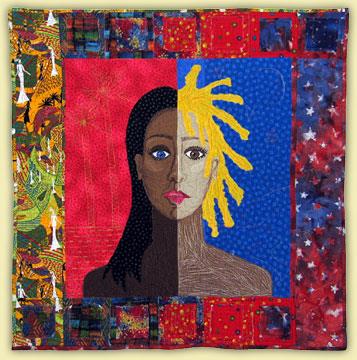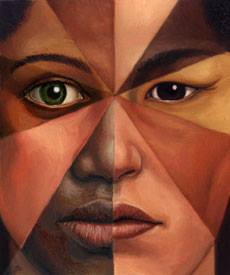Blog
Carlos García Montoya (13 December 1903 – 3 March 1993) born in Madrid, Spain, was a prominent flamenco guitarist and a founder of the modern-day popular flamenco style of music. He was the nephew of renowned flamenco guitarist Ramón Montoya. He first learned from his mother, “la Tula”, and then from a neighboring barber, Pepe el Barbero, i.e. Pepe the Barber. After one year Montoya had completed what Pepe was able to teach him. Carlos left to learn what he could from other flamenco guitarists of the time. At fourteen he was playing in the “cafes cantantes,” in the heyday of flamenco singing and dancing, for such artists as Antonio de Bilbao, Juan el Estampío, La Macarrona and La Camisona in Madrid, Spain.
more...Perhaps the most famous star cluster on the sky, the bright stars of the Pleiades can be seen with the unaided eye even from the depths of a light-polluted city. With a long exposure from a dark location, though, the dust cloud surrounding the Pleiades star cluster becomes very evident. The featured 23-hour exposure, taken from Fagagna, Italy covers a sky area several times the size of the full moon. Also known as the Seven Sisters and M45, the Pleiades lies about 400 light years away toward the constellation of the Bull (Taurus). A common legend with a modern twist is that one of the brighter stars faded since the cluster was named, leaving only six of the sister stars visible to the unaided eye. The actual number of Pleiades stars visible, however, may be more or less than seven, depending on the darkness of the surrounding sky and the clarity of the observer’s eyesight.

Alejandro Neciosup Acuña (born December 12, 1944), known professionally as
Alex Acuña, is a Peruvian–American jazz drummer and percussionist. He has also worked as an educator at University of California, Los Angeles, and Berklee College of Music. LAMA, Musicians Institute, USC, CSUN.
Born in Pativilca, Peru, Acuña played in local bands such as La Orquesta de los Hermanos Neciosup from the age of ten. Acuña then followed his brothers and moved to Lima as a teenager. At the age of eighteen he joined the band of Perez Prado, and in 1965 he moved to San Juan, Puerto Rico. In 1974 Acuña moved to Las Vegas, working with artists such as Elvis Presley, The Temptations, and Diana Ross, and the following year he joined the jazz-fusion group Weather Report, appearing on the albums Black Market and Heavy Weather. While in New York City, Acuña recorded several songs under RCA records. Acuña decided to leave because of the genre limitations placed on him, in which RCA records only had him play Latin music.
more...Forrest Richard Betts (December 12, 1943 – April 18, 2024 West Palm Beach, FL) was an American guitarist, singer, and songwriter. He was best known as a longtime member of the Allman Brothers Band. A co-founder of the band when it formed in 1969, he was central to the group’s greatest commercial success in the mid-1970s, and was the writer and vocalist on the Allmans’ hit single “Ramblin’ Man“. The Allman Brothers Band broke up and re-formed twice, always with Betts in the lineup, until he left the band in 2000.
Starting in 1974, Betts also fronted his own bands, performing concerts and recording records. He released albums as Dickey Betts and Great Southern, the Dickey Betts Band, and under his own name.
more...
Emmanuel N’Djoké “Manu” Dibango (12 December 1933 – 24 March 2020) was a Cameroonianmusician and songwriter who played saxophone and vibraphone. He developed a musical style fusing jazz, funk, and traditional Cameroonian music. His father was a member of the Yabassi ethnic group, while his mother was a Duala. He was best known for his 1972 single “Soul Makossa“. The song has been referred to as the most sampled African song in addition Dibango, himself, as the most sampled African musician in history. He died from COVID-19 on 24 March 2020.
more...Anthony Tillmon Williams (December 12, 1945 – February 23, 1997) was an American jazz drummer. Williams first gained fame as a member of Miles Davis‘ “Second Great Quintet“, and later pioneered jazz fusion with Davis’ group and his own combo, the Tony Williams Lifetime. In 1970, music critic Robert Christgau described him as “probably the best drummer in the world.” Williams was inducted into the Modern Drummer Hall of Fame in 1986 and the Percussive Arts Society Hall of Fame in 1997.
Williams was born in Chicago, Illinois, and grew up in Boston, Massachusetts. He was of African, Portuguese, and Chinese descent. He studied with drummer Alan Dawson at the age of 11, and began playing professionally at the age of 13 with saxophonist Sam Rivers. Saxophonist Jackie McLean hired Williams when he was 16.
At 17, Williams gained attention by joining Miles Davis in what was later dubbed Davis’s Second Great Quintet. Williams was a vital element of the group, called by Davis in his autobiography “the center that the group’s sound revolved around.” His playing helped redefine the role of the jazz rhythm section through the use of polyrhythms and metric modulation. Meanwhile, he recorded his first two albums as a leader for the Blue Note label, Life Time (1964) and Spring (1965). He also recorded as a sideman for the label including the classics Out to Lunch! with Eric Dolphy and Point of Departure with Andrew Hill, both in 1964.
In 1969 Williams formed the Tony Williams Lifetime, with John McLaughlin on guitar and Larry Young on organ. Lifetime was a pioneering band of the fusion movement.
more...Toshiko Akiyoshi (秋吉敏子 or 穐吉敏子, Akiyoshi Toshiko, born 12 December 1929) is an American jazz pianist, composer, arranger, and bandleader.
Akiyoshi received fourteen Grammy Award nominations and was the first woman to win Best Arranger and Composer awards in Down Beat magazine’s annual Readers’ Poll. In 1984, she was the subject of the documentary Jazz Is My Native Language. In 1996, she published her autobiography, Life with Jazz, and in 2007 she was named an NEA Jazz Master by the U.S. National Endowment for the Arts.
more...Michael “Dodo” Marmarosa (December 12, 1925 – September 17, 2002) was an American jazz pianist, composer, and arranger.
Originating in Pittsburgh, Pennsylvania, Marmarosa became a professional musician in his mid-teens, and toured with several major big bands, including those led by Tommy Dorsey, Gene Krupa, and Artie Shawinto the mid-1940s. He moved to Los Angeles in 1945, where he became increasingly interested and involved in the emerging bebop scene. During his time on the West Coast, he recorded in small groups with leading bebop and swing musicians, including Howard McGhee, Charlie Parker, and Lester Young, as well as leading his own bands.
Marmarosa returned to Pittsburgh for health reasons in 1948. He began performing much less frequently, and had a presence only locally for around a decade. Friends and fellow musicians had commented from an early stage that Marmarosa was an unusual character. His mental stability was probably affected by being beaten into a coma when in his teens, by a short-lived marriage followed by permanent separation from his children, and by a traumatic period in the army. He made comeback recordings in the early 1960s, but soon retreated to Pittsburgh, where he played occasionally into the early 1970s. From then until his death three decades later, he lived with family and in veterans’ hospitals.
more...

Centaurus A, cataloged as NGC 5128, which is only 12 million light-years distant. Forged in a collision of two otherwise normal galaxies, Centaurus A shows several distinctive features including a dark dust lane across its center, outer shells of stars and gas, and jets of particles shooting out from a supermassive black hole at its center. The featured image captures all of these in a composite series of visible light images totaling over 310 hours captured over the past 10 years with a homebuilt telescope operating in Auckland, New Zealand. The brightness of Cen A’s center from low-energy radio waves to high-energy gamma rays underlies its designation as an active galaxy.

more...
Alfred McCoy Tyner (December 11, 1938 – March 6, 2020 Philadelphia, PA) was an American jazz pianist and composer known for his work with the John Coltrane Quartet from 1960 to 1965, and his long solo career afterwards. He was an NEA Jazz Master and five-time Grammy Award winner. Tyner has been widely imitated, and is one of the most recognizable and influential jazz pianists of all time.
Tyner played professionally in Philadelphia, becoming part of its modern jazz scene.In 1960, he joined The Jazztet led by Benny Golson and Art Farmer. Six months later, he joined the John Coltrane quartet, which included drummer Elvin Jones and bassist Steven Davis. He worked with the band during its extended run at the Jazz Gallery, replacing Steve Kuhn. Coltrane had known Tyner for a while growing up in Philadelphia, and recorded Tyner’s composition “The Believer” on January 10, 1958, which later became the title track of Prestige Records’ 1964 issued album under Coltrane’s name.
The band toured almost non-stop between 1961 and 1965, recording many albums widely considered jazz classics including My Favorite Things (1961) for Atlantic Records and Coltrane “Live” at the Village Vanguard (1962), Ballads (1963), John Coltrane and Johnny Hartman (1963), Live at Birdland (1964), Crescent (1964), A Love Supreme (1964), and The John Coltrane Quartet Plays (1965), for Impulse! Records.
While in Coltrane’s group, Tyner recorded albums in a piano trio. In late 1962
and the first half of 1963, Tyner was asked by producer Bob Thiele to record more straightforward jazz albums as a leader. These included Reaching Fourth (1963), Today and Tomorrow (1964), and McCoy Tyner Plays Ellington (1965).
In a 2017 review, Marc Myers of JazzWax said “…the finest of these straightforward piano recordings was Nights of Ballads & Blues. Tyner’s playing is exciting and exceptional on all of the tracks… On the album, he exhibits a reserved elegance and tenderness that reveals the other side of his personality—a lover of melody and standards. In this regard, there are traces of Oscar Peterson in his playing. Perhaps Thiele was using Tyner to take a bite out of Peterson’s vast and successful early-’60s share of the jazz market.”
more...Willie Mae “Big Mama” Thornton (December 11, 1926 – July 25, 1984), was an American singer and songwriter of blues and R&B.
The Encyclopedia of Pop, Rock and Soul described Thornton saying “Her booming voice, sometimes 200-pound frame, and exuberant stage manner had audiences stomping their feet and shouting encouragement in R&B theaters from coast to coast from the early 1950s on”.
Thornton was the first to record Leiber and Stoller‘s “Hound Dog“, in 1952, which was written for her. It became Thornton’s biggest hit, selling over 500,000 copies and staying seven weeks at number one on the Billboard R&B chart in 1953. According to New York University music professor Maureen Mahon, “the song is seen as an important beginning of rock-and-roll, especially in its use of the guitar as the key instrument”.
Thornton’s other recordings include her song “Ball and Chain“, made famous in the late 1960s by Janis Joplin. Though later recordings of her songs by other artists sold millions of copies, she was denied royalties by not holding the publishing copyrights to her creativity. Thornton died of a heart attack and liver disorders, penniless in a boarding-house in Los Angeles, California, and was buried in a shared pauper’s grave. In 2024, Thornton was posthumously inducted into the Rock and Roll Hall of Fame in the musical influence category.
more...Louis-Hector Berlioz (11 December 1803 – 8 March 1869) was a French Romantic composer and conductor. His output includes orchestral works such as the Symphonie fantastique and Harold in Italy, choral pieces including the Requiem and L’Enfance du Christ, his three operas Benvenuto Cellini, Les Troyens and Béatrice et Bénédict, and works of hybrid genres such as the “dramatic symphony” Roméo et Juliette and the “dramatic legend” La Damnation de Faust.
The elder son of a provincial physician, Berlioz was expected to follow his father into medicine, and he attended a Parisian medical college before defying his family by taking up music as a profession. His independence of mind and refusal to follow traditional rules and formulas put him at odds with the conservative musical establishment of Paris. He briefly moderated his style sufficiently to win France’s premier music prize – the Prix de Rome – in 1830, but he learned little from the academics of the Paris Conservatoire. Opinion was divided for many years between those who thought him an original genius and those who viewed his music as lacking in form and coherence.
At the age of twenty-four Berlioz fell in love with the Irish Shakespearean actress Harriet Smithson, and he pursued her obsessively until she finally accepted him seven years later. Their marriage was happy at first but eventually foundered. Harriet inspired his first major success, the Symphonie fantastique, in which an idealised depiction of her occurs throughout.
Berlioz completed three operas, the first of which, Benvenuto Cellini, was an outright failure. The second, the epic Les Troyens (The Trojans), was so large in scale that it was never staged in its entirety during his lifetime. His last opera, Béatrice et Bénédict – based on Shakespeare’s comedy Much Ado About Nothing – was a success at its premiere but did not enter the regular operatic repertoire. Meeting only occasional success in France as a composer, Berlioz increasingly turned to conducting, in which he gained an international reputation. He was highly regarded in Germany, Britain and Russia both as a composer and as a conductor. To supplement his earnings he wrote musical journalism throughout much of his career; some of it has been preserved in book form, including his Treatise on Instrumentation (1844), which was influential in the 19th and 20th centuries. Berlioz died in Paris at the age of 65.
more...More Posts
- Kenny Napper Day
- Alan Dawson Day
- World Music with the Warsaw Village Band
- Daily Roots with Freddy McKay
- The Cosmos with M108
- Albert Ayler Day
- Pete Escovedo Day
- Leroy Vinnegar Day
- World Music with Orchestra les Mangalepa
- Daily Roots with Skin, Flesh & Bones
- The Cosmos with M90
- John Patton Day
- Paul Gonsalves Day
- World Music with José Mercé y Tomatito
- Daily Roots with Sista Frika
- The Cosmos with NGC 3242
- Michael Rose Day
- Tomasz Stanko Day
- World Fusion with Auster Loo
- Daily Roots with Jay Tees




